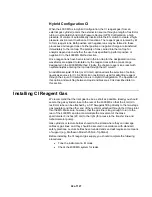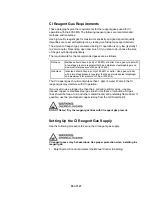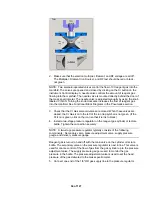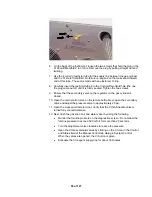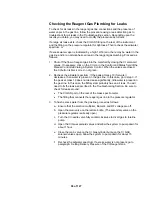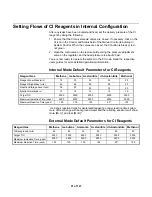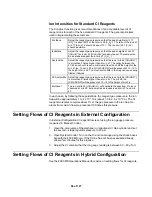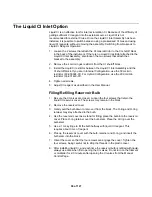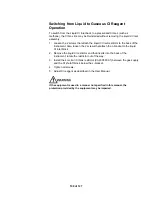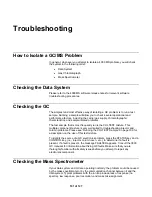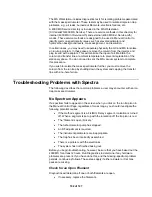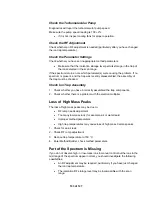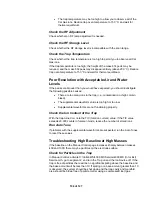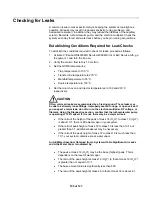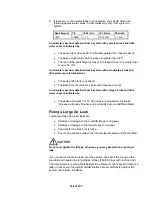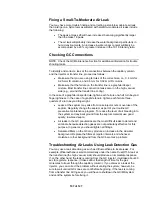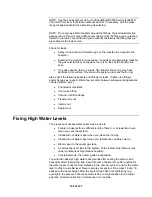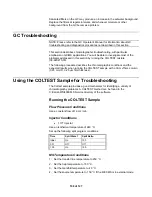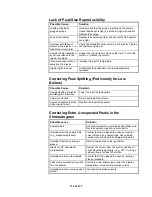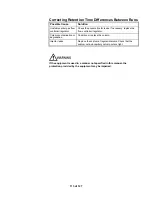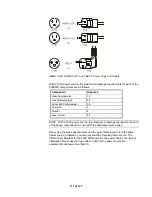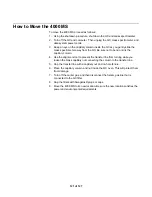
5. If there are no air or water leaks in your system, you should obtain the
following approximate values. Actual values may vary from system to
system.
Base Amount
TIC
18:28 ratio
19:18 ratio
28 width
<500 <5000
~ 1:1
10 to 15%
< 1 m/z
An air/water spectrum obtained from a system with a small air leak and little
water vapor is indicated by:
•
The peak height at mass 28 is noticeably greater than that at mass 18.
•
The base amount value has increased to greater than 500.
•
The ratio of the peak height at mass 18 to that at mass 19 is greater than
or equal to 10:1.
An air/water spectrum obtained from a system with a moderate air leak and
little water vapor is indicated by:
•
The peak at 28 starts to overload.
•
The Base Amount value may be several thousand counts.
An air/water spectrum obtained from a system with a large air leak and little
water vapor is indicated by:
•
The peaks at masses 18, 19, 28 and 32 are broadened. As a leak
increases, all peaks broaden and eventually become undifferentiated.
Fixing a Large Air Leak
Typical sources of large air leaks are
•
Particles or damage on the manifold flange O-ring seal.
•
Particles or damage on the transfer line O-ring seal.
•
The transfer line brass nut is loose.
•
Poor O-ring sealing between the turbomolecular pump and the manifold.
Do not over tighten the fittings; otherwise, you may generate an even larger
leak.
If you cannot eliminate the leak, vent the system, and check the O-ring on the
manifold and transfer line for particles. Wipe off both O-rings with lint-free cloth.
The turbomolecular pump will probably fail to achieve its 100% speed if there is a
leak or poor seal at the turbo/manifold interface. Never attempt to operate the
system under these conditions.
106 of 127
Summary of Contents for 4000 GC
Page 4: ......
Page 40: ...6 of 127...
Page 77: ...3 Check source connection pins for proper alignment and straighten as necessary 43 of 127...
Page 124: ...90 of 127...
Page 148: ...114 of 127...

